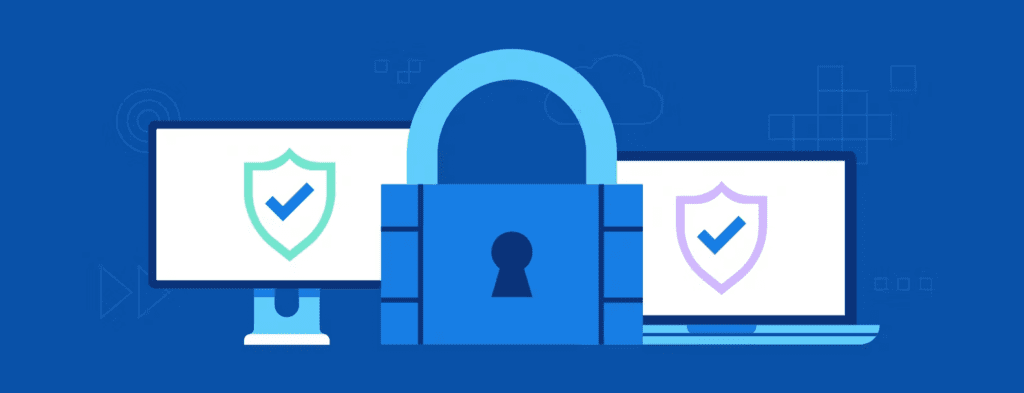
Enterprises often cite security as their prime worry when contemplating cloud services. The notion of housing data or operating applications on an infrastructure that isn’t under their direct control appears innately risky, particularly when data must traverse the public internet to reach these services.
However, enterprises can bolster the security of their cloud infrastructure by adopting effective cloud security tools and best practices. Surprisingly, ensuring cloud security is simpler, provided you play your role effectively. Here are five best practices to consider when securing data in cloud services.
Implement encryption
Adopt stringent encryption methods to secure your data in every step. Ensure sensitive data is encrypted when stored in cloud storage, during its transfer between your system and the cloud, and while it’s processed within the cloud infrastructure.
This guarantees that the data stays indecipherable without the right decryption keys even if there’s an unauthorised breach. These keys must also be kept secure. It’s also suggested to put data loss prevention measures in place for enhanced protection.
Select the appropriate security measures
Top-performing cloud security teams have a comprehensive security technology framework that tracks and records possible security events enables swift threat response, safeguards user endpoints, and consistently averts data loss. This interconnected system should encompass features like encryption, cloud data security, cloud access security broker (CASB) tools, access gateways, and API security resources.
While certain cloud security platforms may provide tools suitable for your infrastructure, additional complementary technologies might still be needed to address shortcomings. When selecting your tools, ensure they can communicate effortlessly and smoothly with each other instead of causing hindrances in your security technology stack.

Shadow IT
Members of your team might not understand the implications of shadow IT when they install and utilize cloud applications and services that haven’t received approval from the cybersecurity department.
Using such unauthorized software presents a variety of cybersecurity threats and issues, such as an absence of IT governance over unapproved applications, potential unaddressed security weaknesses, and complications with IT regulatory compliance.
If these unsanctioned cloud services are exploited, they could have wide-ranging access privileges within your cloud framework. A cyber attacker could then leverage this to erase or extract your confidential data.
Activate visibility for security posture
With the growth of the cloud environment, there’s an increasing risk that security breaches may go undetected. Have the right instruments in place to gain a clear understanding of your security status and to manage security proactively.
All major cloud platforms offer a high-end native Cloud Security Posture Management (CSPM) solution that can provide features such as data exfiltration detection, identification of threat events, prevention of IAM account hijacking, and crypto mining, among others.
However, remember that these services are typically exclusive to their individual cloud platforms. For hybrid or multi-cloud configurations, it’s suggested to include a specific tool to ensure a comprehensive view of your security posture.

Ensure physical protection of data
The importance of physical security is often underemphasized in conversations about optimal data security measures. A simple starting point is to secure your workstations when they are not being used to prevent the removal of devices from your premises. This action can protect your hard drives and other critical data storage components.
Additionally, establish a BIOS password as a barrier for cybercriminals attempting to boot into your operating systems. Your data security strategy must also consider other devices such as USB flash drives, Bluetooth-enabled devices, smartphones, tablets, and laptops.
Train the staff
Staff training involves educating employees on cybersecurity standards. Well-trained staff can help businesses protect sensitive data and maintain cloud service security by effectively identifying and responding to threats. Use the following methods to manage your employee training programs:
- Highlight the dangers of shadow IT: Inform employees about the risks of using unauthorized tools that could expose vulnerabilities, compromising security measures and data integrity.
- Offer comprehensive cybersecurity awareness training: Address topics like identifying threats, creating strong passwords, recognizing social engineering attacks, and understanding risk management.
- Provide specialized training for security staff: Ensure your security team is updated on emerging threats and effective mitigation strategies to uphold robust security protocols.
- Foster accountability through regular discussions: Set security standards, discuss data privacy and password management, and encourage open dialogue about the importance of security regulations.
Endnote
A proactive and multi-dimensional strategy is essential for protecting data in cloud services. Following these suggested procedures can strengthen an organization’s security structure, protect vital data, and ensure the robustness of its cloud infrastructure. As the threat environment continually changes, staying up-to-date is critical. Regularly refresh your understanding of the latest cybersecurity threats and trends. Use the cloud securely to harness its potential and traverse the digital environment with assurance.
